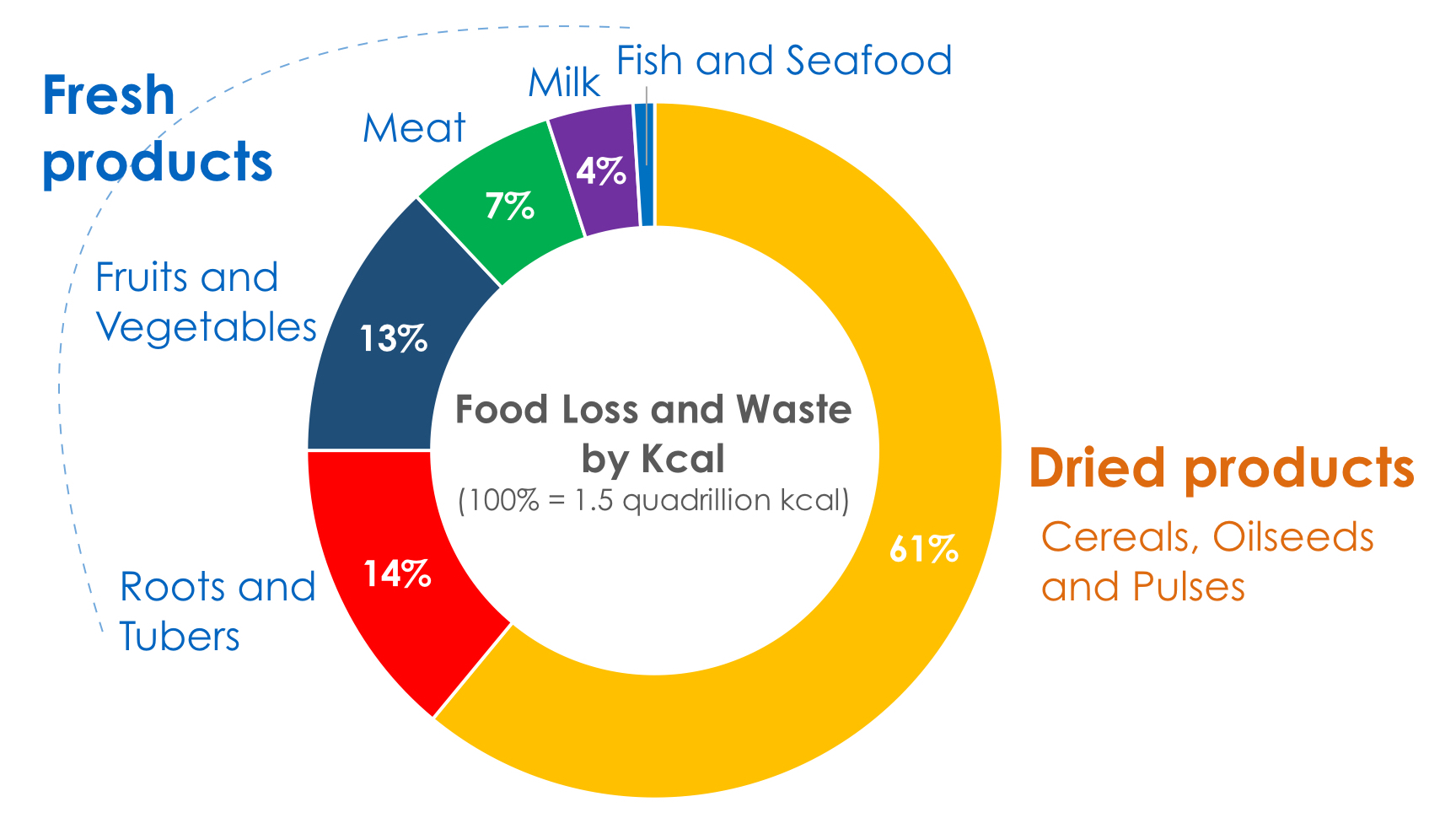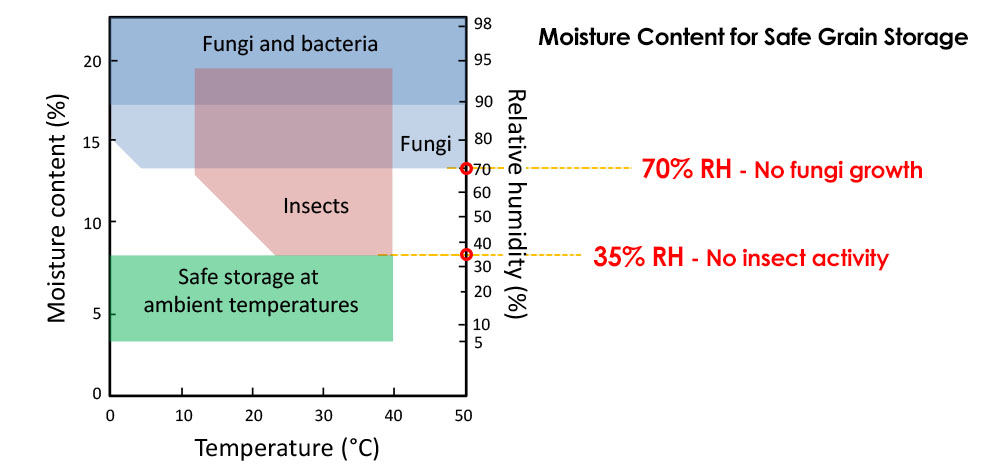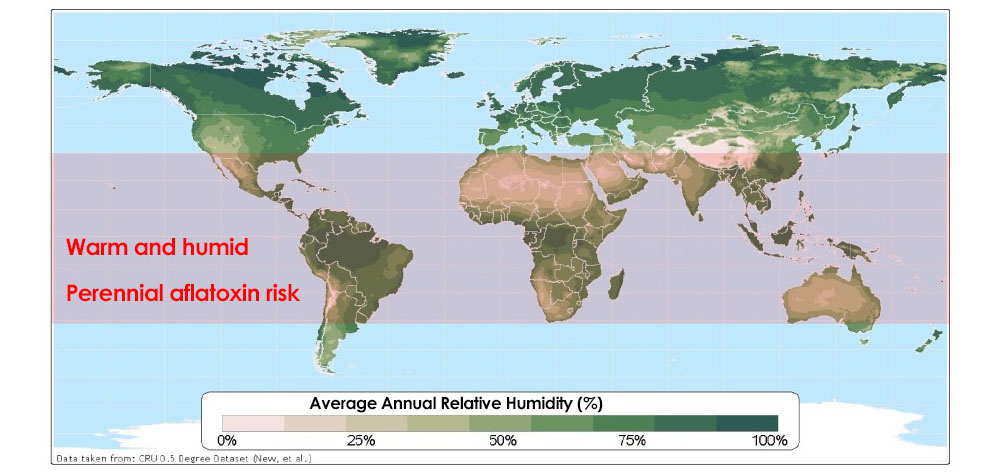1/3 of Total Food Produced is lost before reaching the consumer
In developing countries throughout the humid tropics, food supplies are limited by both yield gaps and postharvest losses. As up to one-third of food produced is lost after harvest, reducing wastage is a critical global development and food security goal. The primary cause of such losses is poor storage conditions, especially high moisture contents (MC) that enable growth of food spoilage organisms (including Aspergillus species that produce aflatoxin).
Cereals, oilseeds and beans account for more than 60% of the food calories lost globally.
Losses of fresh fruits and vegetables often receive the most attention, but cereals, oilseeds and beans account for more than 60% of the food calories lost globally.

Source: WRI analysis based on FAO. 2011. Global food losses and food waste—extent, causes and prevention. Rome: uN FAO.
High Humidity is the enemy

Elevated moisture content (MC) of stored foods is the primary factor that promotes growth of storage molds and insect infestation.
4.5 Billion have aflatoxin in their food
About 4.5 billion people are affected by mycotoxins that have been linked to tumors of the liver, kidneys, urinary and digestive tract, and lungs, as well as birth defects and nervous system problems. In addition, aflatoxin acts synergistically with hepatitis infection, which is also often prevalent in regions where mycotoxins are present in food supplies.
As a result, up to 28% of liver cancer cases worldwide are directly associated with consumption of foods containing aflatoxin. In combination with poor nutrition, dietary exposure to aflatoxins also can contribute to stunted growth and adverse health effects on the immune systems in children. Stunted children will never achieve their full physical or mental potential, with enormous social and economic costs.
Inefficient storage and drying of food commodities in humid climates

In the rainy, humid conditions that are common in the tropics, open-air drying is unable to reduce commodity MC to safe levels that prevent fungal growth. Even when harvest occurs in dry seasons and the commodities can be dried to low MC, they are predominantly stored in porous (e.g., jute or woven) bags, allowing increases in MC during monsoon seasons and enabling product spoilage. Small farmers are often unable to dry their crops sufficiently to store them safely, requiring them to sell at low prices immediately following harvest or risk complete spoilage and loss if saved for consumption. Traders and downstream purchasers in the value chain in turn suffer large losses from discarding unusable products, which are often fed to animals, affecting their health and passing on aflatoxin in dairy products. Inability to dry agricultural products to safe levels and store them without allowing rehydration is a primary cause of postharvest food loss and toxicity.




